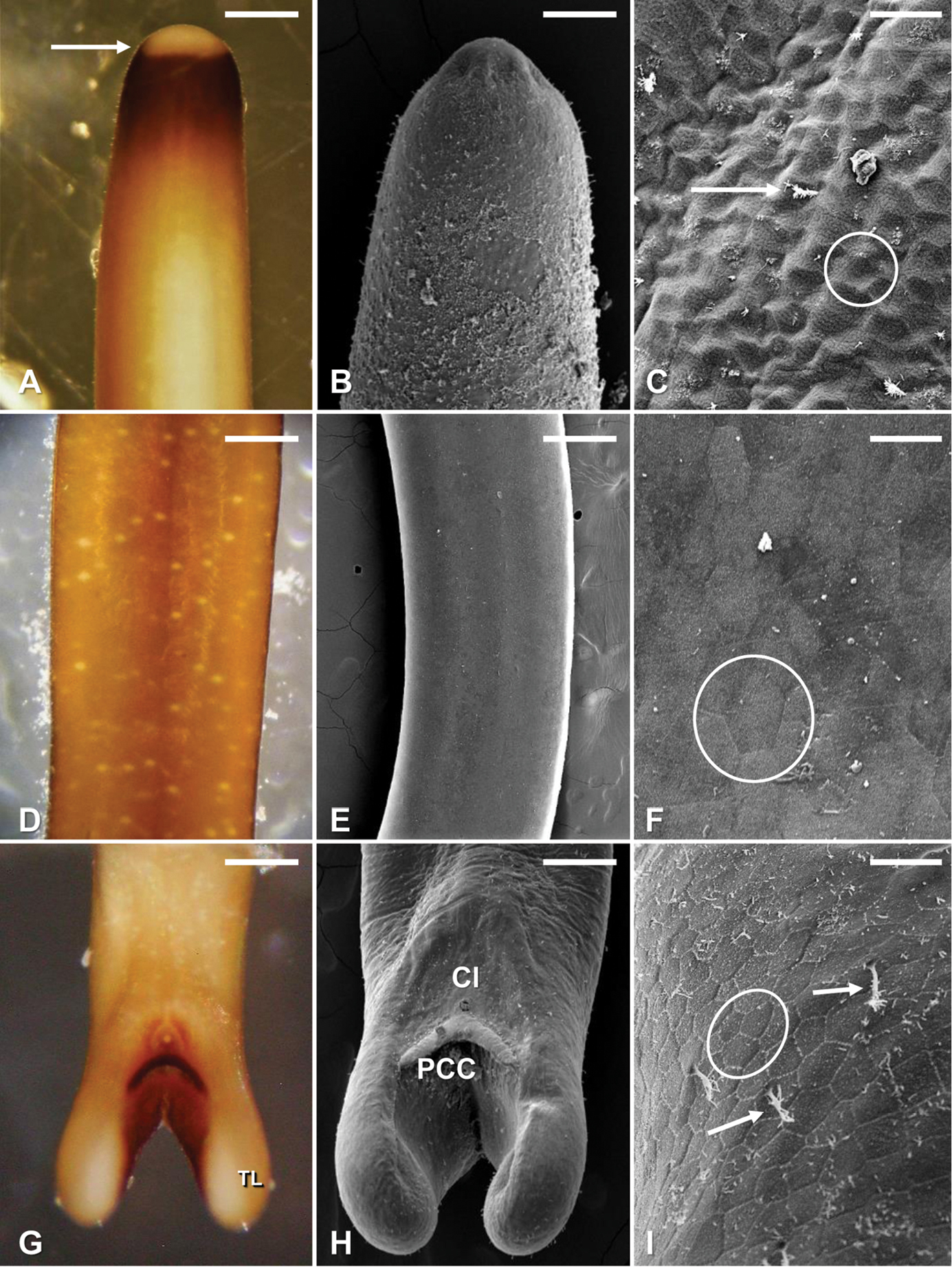
|
||
|
Gordius terrestris sp. nov., adult male from Stillwater, Oklahoma, light (A, D, G) and SEM (B, C, E, F, H, I) photomicrographs A anterior body region showing typical color pattern, showing the distinct calotte (arrow) and dark ring B anterior end, dorsal view C areole pattern on the anterior body region. Note the weakly developed areoles (circle) and the presence of bristles (arrows) D midbody region, dorsal view, showing distinct white spots and medial line E Midbody region, dorsal view, showing typical cuticular pattern F areole pattern on the midbody region; note the weakly developed polygonal shaped areoles (circle) G posterior body region, ventral view, showing distinct coloration; note the darkly pigmented postcloacal crescent and dark pigmentation on inner sides of the tale lobes (TL) H ventral view of the posterior region, showing the cloaca (Cl) and postcloacal crescent (PCC) I areole pattern on the posterior body region; note the weakly developed polygonal shaped areoles (circle) and the bristles (arrows). Scale bars: 210 µm (A); 130 µm (B); 18 µm (C); 220 µm (D, G); 290 µm (E); 10 µm (F); 175 µm (H); 20 µm (I). |